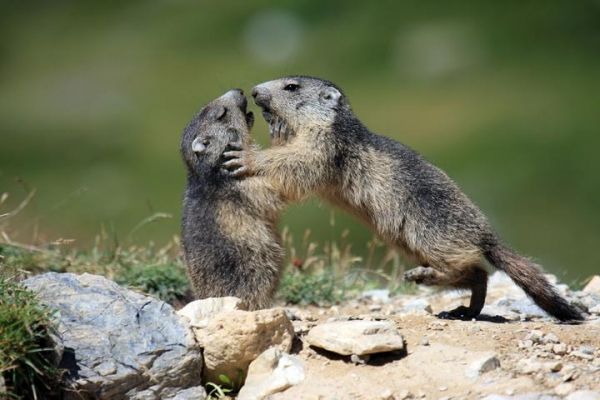What effects does climate change have on the genetic diversity of living organisms? In a study led by Charité – Universitätsmedizin Berlin, an international team of researchers studied the genome of the alpine marmot, an ice-age remnant that now lives in large numbers in the high altitude Alpine meadow. Results were unexpected: the species was found to be the least genetically diverse of any wild mammal studied to date. An explanation was found in the marmots genetic past. The alpine marmot has lost its genetic diversity during ice-age related climate events and been unable to recover its diversity since. Results from this study have been published in the journal Current Biology*.
A large rodent from the squirrel family, the alpine marmot lives in the high-altitude mountainous terrain found beyond the tree line. An international team of researchers has now successfully deciphered the animal’s genome and found the individual animals tested to be genetically very similar. In fact, the animal’s genetic diversity is lower than that of any other wild mammal whose genome has been genetically sequenced. “We were very surprised by this finding. Low genetic diversity is primarily found among highly endangered species such as, for instance, the mountain gorilla. Population numbers for the alpine marmot, however, are in the hundreds of thousands, which is why the species is not considered to be at risk,” explains Prof. Dr. Markus Ralser, the Director of Charité’s Institute of Biochemistry and the investigator with overall responsibility for the study, which was co-led by the Francis Crick Institute.
Read more at Charité - Universitätsmedizin Berlin
Image: Playing marmots. (Credit: Carole and Denis Favre-Bonvin)


